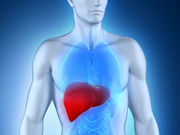Donor liver steatosis is independent risk factor for NODAT among liver transplant recipients
TUESDAY, Aug. 16, 2016 (HealthDay News) — For liver transplant recipients, donor liver steatosis is associated with increased incidence of new-onset diabetes after transplantation (NODAT), according to a study published online Aug. 10 in the Journal of Diabetes Investigation.
Mengjuan Xue, from Fudan University in Shanghai, and colleagues conducted a retrospective analysis of 763 liver transplant recipients to examine whether donor liver steatosis increases the incidence of NODAT. They examined the cumulative incidence of NODAT at one, three, five, and 10 years after transplantation.
The researchers found that 40.5 percent of the donors had liver steatosis. The incidence of NODAT in the steatotic donor liver group was 42.1 percent at the end of follow-up, which was higher than in the non-steatotic donor liver group (P = 0.001). At one, three, five, and 10 years, the cumulative incidence of NODAT among all patients was 33, 43, 50, and 56 percent, respectively; at all time points the cumulative incidences of NODAT were higher in the steatotic donor liver group than the non-steatotic donor liver group (P = 0.003). Among liver transplant recipients, donor liver steatosis was an independent risk factor for NODAT after adjustment for other potential risk factors (hazard ratio, 1.774).
“Donor liver steatosis increases NODAT incidence among liver transplant recipients,” the authors write.
Copyright © 2016 HealthDay. All rights reserved.








